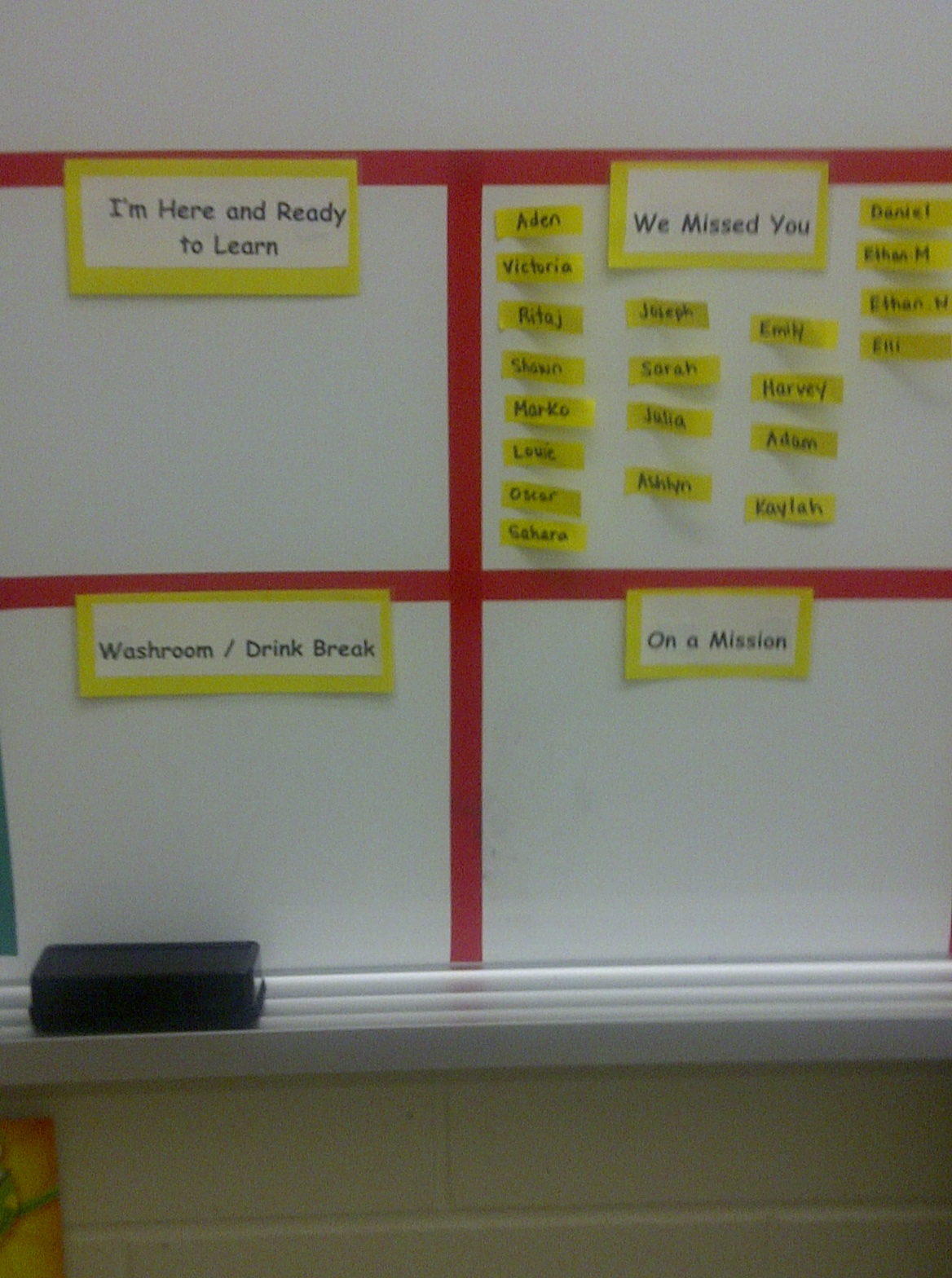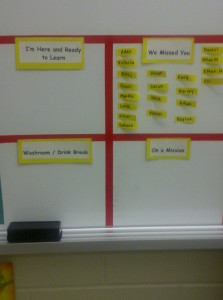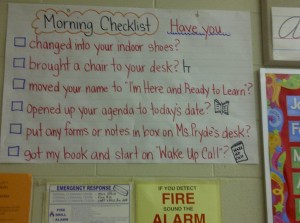When thinking about occasional teacher planning many questions could go through one’s thinking process (what do I leave, how much, what do I bring?). If you are an occasional teacher you need to be able to teach for the time you are in the class with plans or not. If you are a contract teacher, you want the occasional to teach what you would do even if you were there. I just finished having a student teacher in my classroom and as her practicum was coming close to an end, the conversation of occasional teaching came up. She wanted to know how I decided what to leave for an occasional and how much but also what she should expect as an occasional teacher. Below is a summary of what I shared with her:
Planning for an occasional teacher
1) Make sure you leave a current seating plan.
2) Leave tips and notes about your students but remember to be professional as sometimes notes are left in the room for kids to see. Only phrase things in a positive language, leave strategies to help the occasional connect with your students, and 1 or 2 students who the occasional can ask questions about the routine.
3) Leave as much information about your class as possible but remember all information will not always be read. Don’t forget to highlight the allergies in the class and if epi-pens are used (if so, where the epi-pens are stored).
4) Leave lessons which your students will be able to complete. Usually, I still leave my lesson (as if I am there), I make sure I am prepared to complete an assessment for learning when I immediately return. The reason for this is the classroom teacher understands how each student learns, the comfort is there for the student to ask questions and clarify misunderstandings. Also, sometimes occasional teachers don’t have enough background information to connect the lesson for the students, students sometimes behave differently with occasional teachers and lessons are taught differently; the full lesson might not have been taught. I can’t tell you how many times I have returned to my class with a note stating the effort was made but the redirection of behaviour took up too much class time. That being said, I make sure lessons are connected to the curriculum but sometimes I may need to do something different than following my unit plan. It sometimes helps to make the occasional teacher’s day a little more fun.
5) Schedules – leave them in the supply folder. All resource, yard duty, classroom schedules need to be available for an occasional to view.
6) If you need items for a science experiment or art lesson, leave items out or in one location and share the location of items with the occasional teacher.
Working as an Occasional Teacher
1) Arrive as early as possible to give yourself time to review notes and lessons left by the classroom teacher.
2) Be familiar with the grade curriculum (if possible).
3) Try to connect with the neighbour teacher and ask any questions you may have.
4) Have a Language, Math, Science lesson in your bag, as a back up. On very few occasions you may walk into a classroom which has no lessons available for the day. If you have a lesson for each of these subjects, you can fill the day. Based on the grade, have some addition, subtraction, multiplication, division review fun sheets in order for the kids to complete (begin with asking the students to complete any 5, then to pick another 2, and so on). If no photocopier is available, write the questions on the board or display them on the smartboard and have the students record the questions and answers in their math workbooks. For Science or Language, you can have a story book related to the environment. “Where the Forest Meets the Sea”by Jeannie Baker or “The Lorax”by Dr. Suess are two great examples which can begin discussion on environmental issues, based on a situation you give them have the students develop different endings. Another Science activity might be a recycle sort — go through the classroom garbage bin (bring plastic gloves) and sort out what can be recycled or put in a compost. Again, there are many story books you can tie this theme to. For Language, you can use the newspaper and have the students discuss an article you feel is age appropriate. You can also have the kids write down 3 truths and a lie about themselves — then each student presents the 4 statements to the class. The class has to guess which is the lie. The students really enjoy this activity and it does take up an hour and sometimes even more (if the class size is bigger). Please don’t forget about your diversity of learners and adjust your lessons as needed.
5) Don’t forget about yard duty.
6) Try to deal with classroom behaviour in the class. But of course, if safety of yourself or other students is/are at risk, make sure you immediately contact the administration. Having a little reward planned for the end of the day helps students to look forward to something. Making the connection by saying hello/good morning to every student as they enter helps to start off the day well.
7) Say good bye to the administration and thank you to the office assistant(s).
8) Most of all…enjoy the day!





